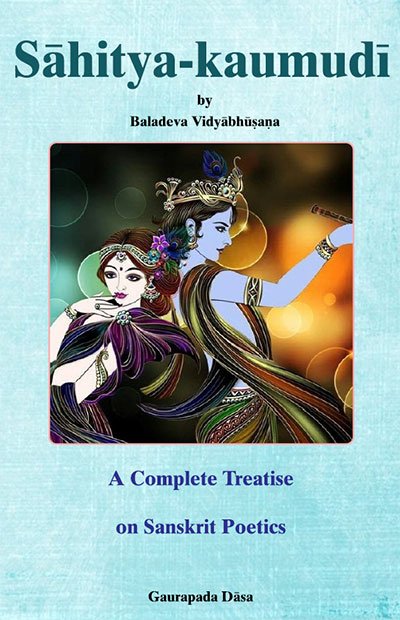Sahitya-kaumudi by Baladeva Vidyabhushana
by Gaurapada Dāsa | 2015 | 234,703 words
Baladeva Vidyabhusana’s Sahitya-kaumudi covers all aspects of poetical theory except the topic of dramaturgy. All the definitions of poetical concepts are taken from Mammata’s Kavya-prakasha, the most authoritative work on Sanskrit poetical rhetoric. Baladeva Vidyabhushana added the eleventh chapter, where he expounds additional ornaments from Visv...
Text 4.37
एषां स्थायि-भावान् आह,
eṣāṃ sthāyi-bhāvān āha,
He mentions the foundational moods (sthāyi-bhāva) of those rasas,
ratir hāsaś ca śokaś ca krodhotsāhau bhayaṃ tathā |
jugupsā vismayaś ceti sthāyi-bhāvāḥ prakīrtitāḥ ||4.30||
The sthāyi-bhāvas are: rati (affection), hāsa (laughter), śoka (sorrow), krodha (anger), utsāha (zeal), bhaya (fear), jugupsā (disgust), and vismaya (astonishment). (Nāṭya-śāstra 6.17)
kramād iti bodhyam.
“Respectively” is to be understood here.
Commentary:
Rati is the sthāyi-bhāva of śṛṅgāra-rasa, hāsa of hāsya-rasa, śoka of karuṇa-rasa, krodha of raudra-rasa, utsāha of vīra-rasa, bhaya of bhayānaka-rasa, jugupsā of bībhatsa-rasa, and vismaya of adbhutarasa. The other forms of the usage of the term rati are mentioned ahead (4.43-47).
